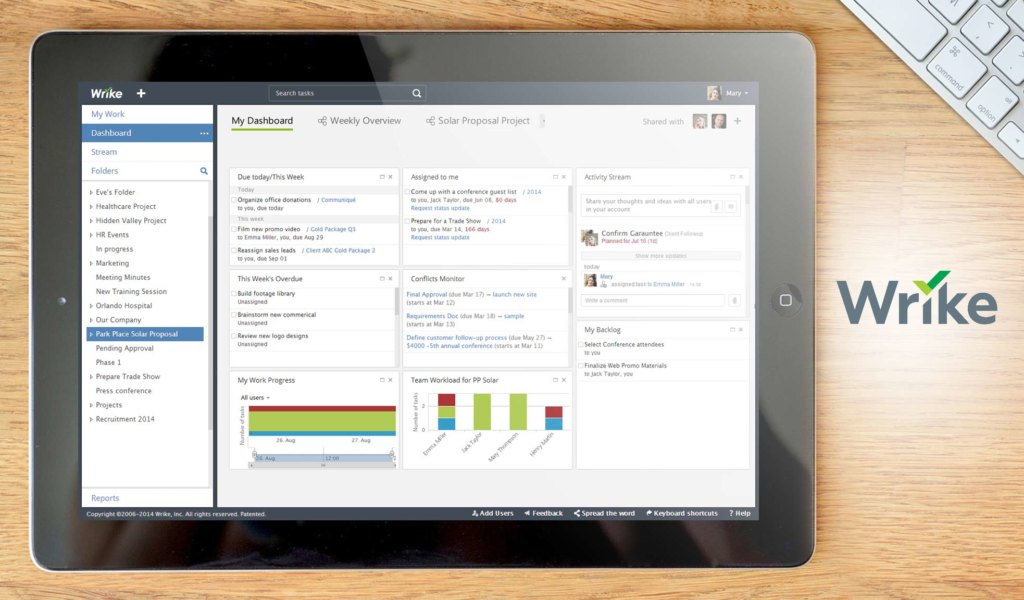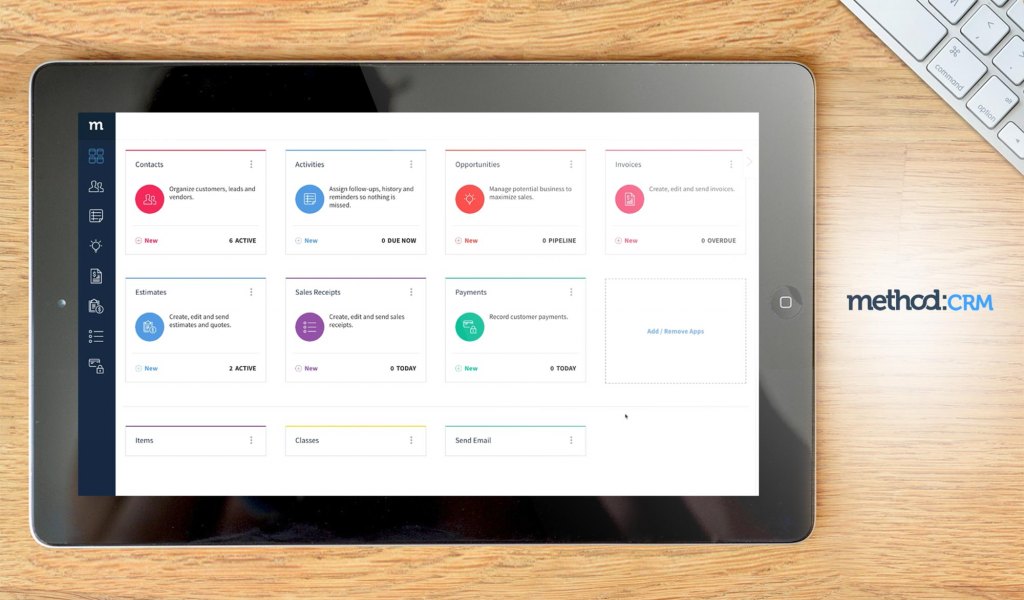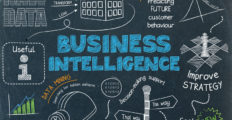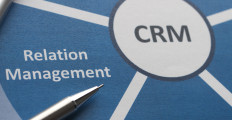Enterprise resource planning or ERP software is a suite of applications that manage core business processes, such as sales, purchasing, accounting, human resources, customer support, CRM, and inventory. It’s an integrated system as opposed to individual software designed for specific business processes.
ERP software solutions have been increasingly gaining traction among businesses, both big and small, owing to its centralized approach to business processes. With it, you can collect, store, manage, and interpret data from various business units. Likewise, ERP is used to automate back-office processes and streamline cross-departmental workflows. When optimized, the solution can drive efficiency, lower costs, and increase profitability.
However, there are still plenty of companies that have yet to invest in one primarily because they are unaware of what it can do as well as what to expect when implementing one. If you are one of these companies, well, you’re in luck. We have prepared an in-depth analysis of the features, types, and benefits that these ERP programs have to offer. Also, we’ll present how ERP systems are typically priced, so you’ll have an idea of how it impacts your budget and listed down some examples that you might want to consider as you browse for one for your company.

Our ERP Software Guide Table of Contents
- What are examples of ERP software?
- Why use ERP software?
- What are the types of ERP software?
- What does ERP software do?
- What are the factors to consider when choosing ERP software?
- How much does ERP software cost?
- What are the potential issues with ERP software?
- What are the latest ERP trends?
- How can you maximize your ERP software?
Among the biggest challenges different industries have to face in the time of the COVID-19 pandemic is adjusting to the new and unfamiliar remote work infrastructure. While there are businesses that are able to transition smoothly to work-from-home setup, it is not easy for organizations that have more complex business operations. To help with business continuity, organizations leverage cloud-based enterprise resource planning or cloud ERP solutions.
Business organizations, however, are no longer new to ERP systems and many already have one in place. But in the midst of the coronavirus outbreak, many have recognized the challenges in effectively implementing their existing ERP solutions, thus prompting them to upgrade, shift vendors, or adopt a new one.
A recent study conducted by Panorama Consulting Group on ERP system selections reveals the selection decisions of businesses from different parts of the globe regarding adopting new ERP solutions, particularly during the coronavirus outbreak. The majority of organizations have decided to leave their legacy ERP; meanwhile, while more than 23% made the decision to upgrade their ERP system. The rest of the organizations are divided between shifting to a higher or lower tier vendor and shifting to another ERP vendor within the same tier.
Source: Panorama Consulting Group 2020 ERP Report
If you are still wondering what ERP system is the right one for your business, we will get right down to the nitty-gritty of its features, benefits, types, as well as recommend some of the best ones in the market. This way, you have an idea of what to expect and which one will work best for your business.
What are Examples of ERP Software?
To help you get a better idea of what a good ERP tool is, we have listed down some of the leading software solutions on the market, along with a short description of what they can do. These platforms are known for their fully integrated interfaces, comprehensive feature sets, scalability, and easily configurable systems, so you can be sure that these are indeed the best of the best when it comes to ERP software. Of course, these are not the only platforms that you can consider. If you’d like to see more options, check out our list of 20 best ERP software tools.

NetSuite ERP is one of the leading examples of ERP platforms on the market.
Netsuite
Integrated ERP software NetSuite ERP is built for fast-growing companies. The platform offers a scalable interface equipped with everything you need from financial management and inventory management to payment processing and vendor management. It is capable of automating a wide range of front- and back-office processes so that streamlining operations is much more simple. Moreover, it gives users robust reporting tools that offer actionable insights into your performance.
Method:CRM
Method:CRM is built to fully integrate with QuickBooks to help sales teams improve their overall processes. Trusted by hundreds of companies globally, this platform comes with lead management, invoicing, time tracking, work order management, and more. With this, teams can simplify sales processes, capture more leads, and deliver personalized customer experiences. It also comes with a highly scalable interface which allows it to grow with your company.
Acumatica
Acumatica is a cloud-based enterprise resource planning (ERP) software that helps fast-growing companies thrive in the digital economy. It provides the right foundation for every organization to build a flexible and efficient environment with its robust suite of ERP applications. Acumatica is ideal for small and mid-sized businesses that also have telework and mobile setups.
Wrike
Wrike is a cloud-based collaboration tool that makes it easier to keep track of projects, deadlines, and schedules, among others. Companies use it to work together as a team and with outside collaborators. It lets you change how tasks, graphs, and updates look in project views. With one click, you can turn your emails into tasks and send them to Wrike to keep track of them. Wrike can connect to most B2B apps and is available in nine different languages. It has a free plan as well as three paid plans.
Rossum
Web-based accounts payable software Rossum provides organizations with a document-management-based workspace and automation for business process management. With its self-learning AI technology, it automates the scanning, collecting, and validation of data such as invoices and other forms. This unique document management technology can be deployed in many use enterprise-use cases ranging from AP automation and task management to logistics and compliance. It also integrates well with other business systems and has a robust analytics and reporting module to boot.
Why Use ERP Software?

Beyond answering the question of “what is ERP software?” you should also know why you need it. The purpose of ERP software is to increase efficiency, streamline processes, and promote a culture of collaboration in an organization. This results in minimized costs and increased productivity, which can eventually lead to a better bottom line. Let’s break down the advantages of ERP software:
1. It Increases Efficiency
Business processes like accounting, sales, marketing, production, and inventory are integrated into one ERP platform. It’s easier to collect and access data across the organization, streamlining cross-departmental workflows.
Likewise, ERP automates day-to-day tasks, like entering data or generating reports. Repetitive processes are eliminated, freeing teams to focus on their core deliverables. For instance, marketing can run a daily web traffic report without bugging tech; or, accounting can instantly access the week’s sales stats without chasing the sales director.
ERP also provides managers and key stakeholders with quick look-ups. Dashboards allow decision-makers to glance at key performance indicators across the organization. If they want to investigate more, managers can drill down into details with just a few clicks.
2. It Promotes Collaboration
ERP breaks down walls between departments. Data silos are integrated, and a process superhighway links local workstations together. This setup allows teams that used to operate in a vacuum to easily collaborate with other teams inside the ERP platform.
Moreover, SaaS ERP further extends collaboration between remote teams and headquarters through the internet. Offshore business units are now within earshot of their mother unit. A culture of collaboration drives innovation and team play and, in general, makes businesses more competitive.
3. It Increases Data Security
ERP solutions have firewalls and restriction controls to guard against data breach. Having a single data warehouse means access points are tightly monitored, and security is concentrated. Likewise, user permission rules give the admins the flexibility to lock in sensitive data without limiting user access to other information.
Administrators can also quickly deactivate the access of terminated employees and grant permission to new ones. ERP solutions also display user activities, so you can easily spot unauthorized actions or suspicious activity patterns in the system.
4. It Helps You Comply with Industry Regulations
Many ERP solutions feature built-in regulatory process standards and compliance reporting to help businesses meet myriad business requirements. ERP solutions subscribe to reporting protocols for aspects like financial accounting, product regulations, and data security.
5. It Allows You to Make Accurate Forecasts
The only worse thing about the lack of a forecast is making the wrong one. Forecasts shape strategies; thus, it’s crucial organizations get the real picture. Using a centralized database, ERP lends to a company’s disparate business solutions, a standardized process, ultimately enhancing data integrity.
ERP reporting tools use advanced filters and analytics to sift data for inconsistencies. Features of ERP software like deduplication also ensures data is updated and duplicate-free. With data integrity intact, managers can generate reports with realistic forecasts. Similarly, estimates are within a sensible range of outcomes.
Moreover, advanced ERP solutions with business intelligence tools use machine learning and predictive algorithm that allow users to dig deep into big data. Companies with complex data sources can leverage ERP for hidden insights and gain a competitive edge.
6. It Increases Operational Flexibility
SaaS ERP also gives you the means to increase operational flexibility. For one, it helps you integrate existing apps to your system or export your ERP data to other business apps for a more streamlined workflow. Secondly, most of these give you the option to add more modules as your business grows so that you no longer need to replace your system with new software. Lastly, SaaS ERP gives you mobility as it can often be accessed on any device so long as it is connected to the internet.
7. It Reduces Operational Costs
A company can also leverage ERP to cut down costs. When processes are streamlined and key metrics are closely monitored, disruptions, delays, and breakdowns are anticipated, and their impact better managed.
Manufacturing and distribution are especially vulnerable to disruption. But with ERP allowing production, engineering, customer service, and other business units to work closely together using real-time data, resolving sudden problems is faster. Operating costs are also kept within budget.
To add to these, ERP software providers often take care of patches, give regular updates, and handles troubleshooting in case of technical problems. This means you don’t have to worry about maintenance costs.

Rossum’s reporting and analytics module provides organizations with a birds-eye and in-depth view of activity within its system
What are the Types of ERP Software?
You’ve learned what is ERP software, let’s now look at the different types. The fluidity of ERP dynamics and the diversity of factors affecting it make it difficult to classify the category. It can be grouped by functional levels, business size, and deployment. To simplify the types, ERP can be grouped as follows:
- Generalist ERP. Many legacy and cloud ERP solutions are generalists. They adapt to processes across industries. These solutions have strong customization and integration to match varying industry requirements. It’s also not a surprise given its large market generalist ERP vendors are also one of the largest. Some examples of this type of ERP solution is NetSuite ERP.
- Open-Source ERP. Open-source ERP solutions are still a tiny fraction of the total ERP market. But solutions like Odoo ERP lend to companies with resident tech teams the flexibility to develop and integrate their apps into the ERP. For developers, open-source increases usability and user adoption because the ERP can churn out highly customized processes.
- Vertical ERP. These are industry-specific ERPs. Often, vertical ERP vendors are startups or smaller companies that try to focus on a niche, such as construction, supermarket distribution, or retail fashion. Among the most popular examples of this particular platform is Microsoft Dynamics AX.
- Small Business ERP. These are off-the-shelf cloud or on-premise ERP solutions. Often, the ERP is modularized with pared-down features. Instead of delivering a fully integrated system, small business ERPs like PeopleSoft serve one or two business processes and leaves out the others. For instance, it features HRM and accounting function only, with add-on options for CRM, inventory, or supply chain management. For this, small business ERP is also referred to as lightweight ERP.

What Does ERP Software Do?
ERP can be fully integrated or customized to specific processes. A typical ERP system covers key business processes and consists of the following modules:
- HRM. This module features standard HRMS tools like time tracker, timesheet, and database for employee records, job profiles, and skills matrix. HRM modules may also include performance reviews and payroll systems. The latter is closely integrated with the financial management module to manage wages, travel expenses, and reimbursements. Some ERP solutions also feature a training or LMS function under HRM.
- Financial management. This module manages your capital inflow and outflow. It covers standard accounting and finance transactions like expenditures, general ledger, balance sheet, bank reconciliation, tax management, and payments. This also generates financial reports for different departments and business units.
- Sales and Marketing. The module handles sales workflows like sales inquiries, quotations, sales orders, and sales invoices. The more advanced ERP also features taxation rules and shipping tracker. The Sales and CRM modules work together to speed up the sales cycle and earn the company more profits.
- CRM. The CRM module helps you to boost customer service and, eventually, profit per capita. It manages leads, opportunities, and customer issues. Likewise, it provides a 360-degree profile of your customers by consolidating data like their social media activities, purchase history, and past interactions with support reps. In an ERP setup, CRM is closely integrated with the Sales module to fast track conversions.
- Manufacturing. Sometimes referred to as engineering or production, this module helps businesses make manufacturing more efficient in areas such as product planning, materials sourcing, daily production monitoring, and product forecasting. Some of the key functionalities in this module are the bill of material, production scheduling, shop floor control, and distribution planning. The module is tightly integrated with SCM and inventory modules, especially in areas like product planning and inventory control.
- SCM. This module covers key aspects of your supply chain, including purchase order management. It manages product flow from production to consumer and, occasionally, vice-versa for returns or recalls. A key feature of the SCM module is process automation, which streamlines your entire supply chain and makes it adaptive to sudden market shifts.
- Inventory. Also called material management module, it helps you measure stock targets, standardize replenishments, and other inventory goals. It uses product serial numbers to track and locate items in your organization. This module is closely integrated with the Purchase module.
- Purchasing. This module manages the processes involved in materials procurement. These include supplier listings, quotation requests and analysis, purchase orders, Good Receipt Notes, and stock updates. As such, it functions closely with SCM or Inventory modules.
In addition to these basic functions, there are more advanced ERP platforms that also include business intelligence, asset management, and ecommerce. Moreover, ERP can be vertical with industry-specific features for, among others, retail, healthcare, government, and nonprofits.

What are the Factors to Consider When choosing ERP Software?
Suppose you already weighed the cost-benefit ratio of getting an ERP, and you’re convinced it’ll drive overall profitability. You now need to consider these key factors to ensure you optimize your ROI.
- Upgrade vs. Replacement. Evaluate first if you need to get a new ERP system or just an upgrade. Many ERP solutions today are modularized. You can simply integrate a module, for instance, payroll, with your current applications. This way, you minimize disruption and costs. But if your ERP system is ten years or older, it may be wise to replace it. You can leverage today’s ERP solutions for mobility, integration, scalability, and deployment options. Similarly, machine learning, predictive analysis, and advanced reporting are pushing ERP to the next level.
- Training and Setup. On-premise ERP solutions need to be installed by someone with technical know-how. If you lack a tech team, make sure you understand your service level agreement or SLA. Installation is often charged separately from the license, but some vendors offer all-in bundled plans. For SaaS ERP, setup is as easy as activating an account to access the vendor’s server. Likewise, ERP is more complex than most business solutions, so it requires user training. Does your vendor provide this service? Whether bundled in or exclusive to the plan, the kind of training you’ll receive should suffice for average users to adopt the system.
- Reporting and Dashboards. Go beyond spreadsheets and PDF exports. ERP solutions today feature advanced reporting that can generate compliant financial statements based on your region. The latest ERP reporting tools also allow in-system queries and smart filters, coupled with real-time data. Likewise, look for agile and ad hoc reporting to quickly adjust to evolving business needs and disruptions. Dashboards, on the other hand, should let you mash up quantitative vs. qualitative data at user, role, and department levels. Look for the standard dashboard function of displaying KPIs with drill-down links.
- Integration. ERP should work seamlessly with your existing business applications. There are several integration points you need to consider from top to bottom. These include system-to-system (example, ERP to your existing CRM or HRMS), module-to-system (example, ERP payroll to your existing HRMS), and file transfer capabilities (example, exporting/importing PDF, JPG, DOC, CSV files). An ERP with flexible integration can work with existing infrastructure, expand its functionalities or, in fact, replace it while ensuring smooth records and file migration.
- Customization. Aside from ensuring the ERP processes match your key business workflows, look closely at your departments. They may have different priorities and cultures, which may even be contradictory. For example, marketing spends, while accounting saves, or production lives by daily output, while sales live by monthly quota. All these lead to myriad workflows that won’t fit into a one-size solution. Look for an ERP solution with customization tools, localized dashboards, and configurable workflows, among others, that allow departments to define their goals and set the ERP based on their parameters.

Oracle ERP Cloud is another best-in-class platform that offers comprehensive features and a scalable, highly configurable interface.
How Much Does ERP Software Cost?
Most ERP solutions are priced by quotation for customized features. The cost of ERP software is usually based on factors like several users, modules, installation, add-ons, maintenance, and training. Let’s take a look at the pricing models of some of the most popular ERP solutions today.
- NetSuite ERP is available by-quote and is priced based on the number of modules you want for your system, the number of users per month, as well as the kinds of add-ons you need.
- Tipalti is also offered in quote-based plans as it is deployed according to your particular needs. The vendor also offers a free trial period to know the right mix of features to help you succeed.
- Rossum is offered in quote-based plans as it is rolled out customized to an organization’s requirements. To see how should it be deployed for our organization, sign up for its free trial version to access all the premium features.
- Scoro offers pricing plans that vary based on the number of users and the features. The vendor offers four pricing plans namely Essentials ($26/user/month), Work Hub ($37/user/month), Sales Hub ($37/user/month), and Business Hub ($61/user/month).
- Sage Intacct, like many other leading ERP platforms, only offers quote-based plans so be sure to contact the vendor to get a package tailored to your specific needs.
- SYSPRO is only available by quote. Their plans are often calculated according to your preferred deployment option, the number of users you want to onboard, and the modules you’ll be needing.
- Odoo offers a flat rate of €10/month, making it one of the most affordable options among the leading ERP platforms. This is inclusive of the basic functionalities of the program. Separate charges apply for the applications you are going to integrate into the system.
- Oracle ERP Cloud offers three enterprise pricing structures that are bundled according to the functionalities you’ll be needing. They have a Financial Reporting Plan, Advanced Financial Control Plan, and Advanced Access Control Plan that cost $175/user/month, $80/user/month, $150/user/month, respectively.
- Microsoft Dynamics GP offers a variety of pricing plans depending on your licensing preference. For those who want to subscribe to a service, they have a package that costs $214/user/month as well as a hosting plan that costs $134/user/month. They also have a perpetual licensing plan that is available by quote.
- SAP ERP is only available on a price quote basis. These plans are often bundled depending on the types of modules you prefer as well as your required deployment option. For more information, be sure to contact the vendor.

What are the Potential Issues with ERP Software?
1. One-size-fits-all doesn’t cut it.
Plug-and-play, off-the-shelf ERP solutions work well with small businesses with straightforward processes. But for large corporations with subsidiaries in different places, a uniform system quickly runs into bumps in a diverse environment. Variations in factors like culture, policies, and regulations make it difficult to implement an overarching infrastructure. The result is either the ERP suffers low user adoption or an expensive system is left in an abandoned company warehouse.
Many large enterprises today are trying a two-tier ERP approach to address their organizational complexities. A corporate ERP is used by headquarters, while another ERP system is used by the subsidiaries.
2. Unsupported applications.
If your business is using dozens of productivity apps, introducing a plug-and-play ERP won’t be that smooth. The more existing applications you have in place, the narrower your options to find a fully integrated quick-install ERP solution.
Unless you plan to discard existing applications, you need to assess ERP integration for each of these apps. It’s time-consuming and, even if you’re lucky, you’ll find the best ERP falling one or two apps short in compatibility space. In such a case, getting an ERP with an open API ensures your developer can tweak the system to integrate your current apps.
3. Security risks.
ERP aspires to cover the whole nine yards of operational and financial tasks. This overarching infrastructure, in fact, lends to ERP its strengths: shared files, integrated and automated processes, central database and a collaborative platform. They drive efficiency and lower costs.
However, the same single architecture is its source of weakness. the classic all-eggs-in-one-basket risk. The wider the scope of ERP, the more access points it has. This means there are more chances of an internal data breach. Although firewalls and encryption mitigate this risk, the fact is all your data is attached to this system superhighway.
Poorly designed ERPs heighten even more the security risk. Incompatible applications can lead to crashes. Limited reporting tools force users to import external files, leading to a firewall break. Moreover, a disgruntled tech employee can wreak large-scale havoc. Delayed updates or old system version also exposes all your data to hacks.
The good news is, ERP vendors are fully capable of putting up security checks and controls. After all, any breach is a death kiss to their business.
4. Lack of compliance.
Most ERP solutions are designed for financial compliance, so the problem is less of a technical shortcoming and more of how the ERP is implemented. When an accountant is not part of the ERP project, it’s easy to gloss over financial compliance. The CEO or CIO is focused on streamlining processes to drive efficiency.
Without the auditing and regulatory knowledge of a CPA, financial regulations can easily be overstepped, including GAAP requirements and Sarbanes-Oxley Act (SOX) protocols for US-based public companies.
The issue can easily be addressed by including a certified accountant in your ERP project team. He or she can verify if the configuration, controls, and processes are compliant and recommend audit controls, where necessary.

As the product of an industry leader, SAP ERP offers features that are continuously being improved to eliminate the abovementioned risks.
What are the Latest ERP Trends?
The hype around Internet-of-Things and artificial intelligence, notwithstanding, ERP trends revolve around predictable tech developments. This niche is playing catch up to other SaaS solutions, possibly due to the more complex setup of ERP. Here, we have a compiled a list of trends that are gaining traction among ERP vendors, both legacy and startups:
- SaaS and On-Premise Hybrid. ERP, because of its complexity, has a lot of grey shades in between SaaS and on-premise. Some companies prefer a hybrid approach, integrating cloud inventory management into their on-premise accounting-centric ERP or a cloud payroll into a local HR-focused ERP. From a cost and process perspective, this strategy makes sense, driving vendors, both legacy and startups, to offer hybrid ERP. For example, Oracle isn’t replacing its on-premise licensing, but co-opting it with cloud solutions. Similarly, Salesforce, a pioneer enterprise cloud platform, offers integration with legacy on-premise solutions like SAP and Siebel.
- Two-tier ERP. Large multinational companies are favoring a two-tier ERP approach. In this setup, two ERP systems are in place, tier 1 at the corporate level and tier 2 at the subsidiary level. This strategy is borne out of the limitations realized by big corporations in building an overarching ERP system across a multi-country organization, replete with stark regulatory, cultural, geopolitical and market differences.
- Social ERP. Billed as ERP 2.0, social ERP adds social media data like Twitter and Facebook profiles and posts into the mix. The integration is mainly a CRM initiative as businesses leverage online customer engagement, brand mentions, public data, friend networks, and likes and shares to gain tacit customer knowledge. A SYSPRO study pointed out how social ERP can increase customer engagement and, eventually, improve conversion rates.
- Mobile ERP. Some ERP solutions now offer native apps for iOS, Android, and Windows. Most of these, however, are pared-down versions featuring only the most important KPIs like sales, leads, and web traffic. Still, this means you can remain connected and productive outside of the office. But mobile access can be a double-edged sword. The security risk is heightened when sensitive data is accessed anywhere and via a device not issued by the company. A good mobile ERP allows separate user permission to help you manage who can access company data on their phones.

Microsoft Dynamics GP offers top-notch ERP functionalities that adapt to the current industry trends.
How can you maximize your ERP software?
As you can probably tell from what we’ve discussed so far, ERP platforms provide businesses with practically everything they need to manage operations. It can streamline workflows, facilitate collaboration, process transactions, and the list goes on. However, you should also acknowledge that ERP solutions are not supposed to be treated as a silver bullet that will magically optimize your entire business. Instead, think of it as a tool that will reinforce the work system that you’ve already set for your operations.
If you want to make the most of your investment, you will need to put in some effort not only into learning how it works but also into understanding how you can make it work for you. One such way to do this is by applying some of these best practices:
- Establish Key Performance Indicators. Before you implement an ERP system, you need to know what goals you want to achieve. You need to set concrete key performance indicators to help you guide your workflows in the right direction and evaluate your success later on.
- Have a Workflow in Mind. In any industry, it is not a good idea to go about your day-to-day operations blindly. You need to plan how exactly you want to achieve the goals you’ve set by having a workflow in mind. First off, you need to define roles and responsibilities as well as come up with a proper chain of command. After this, you need to lay out the specific steps that one needs to do to finish particular projects. Lastly, you will need to set how you want tasks to move from the moment they are made to the time they are accomplished. By doing so, it is easier to monitor if your projects are being done correctly and pinpoint inefficiencies in your system.
- Create a Concrete Timeline. For every task you undertake, you should have a specific time frame in which you expect it to be accomplished. This is helpful not only in getting accurate estimations of project completion but also in gauging the productivity of your team.
Ready to choose an ERP system for your organization? A good idea is to start by evaluating the top ones in this niche, which you can measure against the other systems. Check our comparison of the top 3 ERP systems here to jumpstart your product research.






























Wow, I have been reading about ERP for about two months now for the graduate course I take. This is by far the most comprehensive and important document I came across. Very very useful, practical, and helpful.
First major benefit of an ERP system is unification of the IT costs and achievement of higher efficiency in business operations. Second, benefits is higher visibility, since ERP system provides total access to each and every important process in business through making data from multiple departments easily accessible to the leadership. Lastly, it helps in creating a unified and single reporting system for every process.
ERP system helps in streamlining all your businesses processes together which in turn helps in boosting collaboration and enable your firm to make data driven decision. Furthermore, ERP can cover multiple business functions, these include finances as most ERP dashboards provide you with an overview of business finances, thereby allowing the businesses to tap into real time information anytime and anywhere. Furthermore, it also helps in managing firm data and streamline employee management tasks such as payroll management, thus eliminating the need of a second software required to maintain personal records of all employees, by making reporting process more streamlined.
ERP or Enterprise Resource Planning is basically a suite of software which is utilised by firms for the management of daily business activities such as; risk management, supply chain operations, accounting, project management and procurement. There are some firms that offer complete ERP suite which includes enterprise performance management software that allows businesses to plan, budget, forecast and report the financial results of the organization.
Leave a comment!